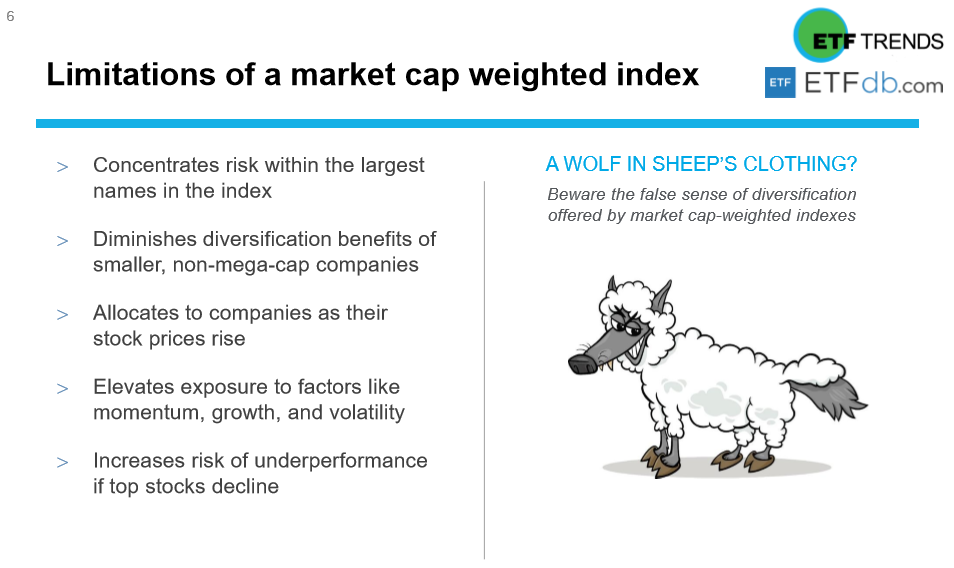When it came to using factors to make investment decisions, the only access advisors had was via actively managed funds, but the advent of exchange-traded funds (ETFs) have given them the tools to maximize their asset allocation strategies.
“When they first came out, I was probably a little skeptical about factors as just a marketing play,” said Eric Uchida Henderson, CIO of East Horizon Investments, a planning firm in Cambridge, Massachusetts.
Now, with almost 400 smart beta ETFs that use some type of factor-based strategy, advisors can pick and choose how to allocate investor capital. One of the challenging aspects advisors face with this more cautious investor is the plethora of options available, especially in the exchange-traded fund (ETF) space. Where are the opportunities in ETFs given the current market landscape and how can smart beta-factor strategies work in a portfolio?
A market-capitalization-weighted index provides clients with exposure to a particular market based on security prices, without considering any true company fundamental to judge its value. However, the Great Recession of 2008 roiled investors with deep declines that they were not anticipating, as a result of overexposure to potentially overpriced stocks relative to their true value.
As such, things began to change, with many financial advisors shifting to smart beta strategies in the past 10 years. The first aspect to touch upon was the limitations of a market cap weighted index, which would then warrant the need for smart beta and factor strategies.

Given certain market conditions, investors need more than just a passive index that goes beyond a one-size-fits-all template that uses market cap weighting. While these indexes provided simple, low-cost solutions, the need for even greater scrutiny is necessary in the quest for more alpha —a case for smart beta.
Through smart beta, investors get adaptable exposure with the rules-based approach in conjunction with reaping the rewards of diversification via access to a broad market index. In addition, the simplicity of buying a broad-based market index has a concentration of risk, and should a market correction ensue comparable to that witnessed in the fourth quarter, investors are left vulnerable.
As such, smart beta strategies can be segmented into alternatively weighted, single factor and multi factor strategies–the latter to diversify concentration in a specific factor–low or minimum volatility, momentum, size, quality, yield, and value.
Not sure where to start? Advisors and individual investors can peruse through a long list of funds to choose from.
For more market trends, visit ETF Trends.
